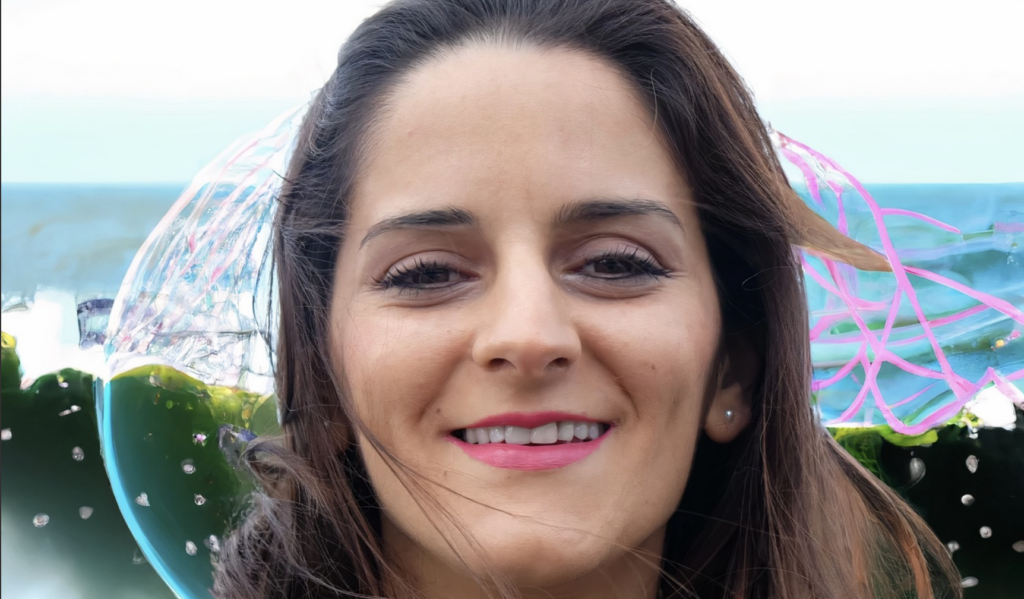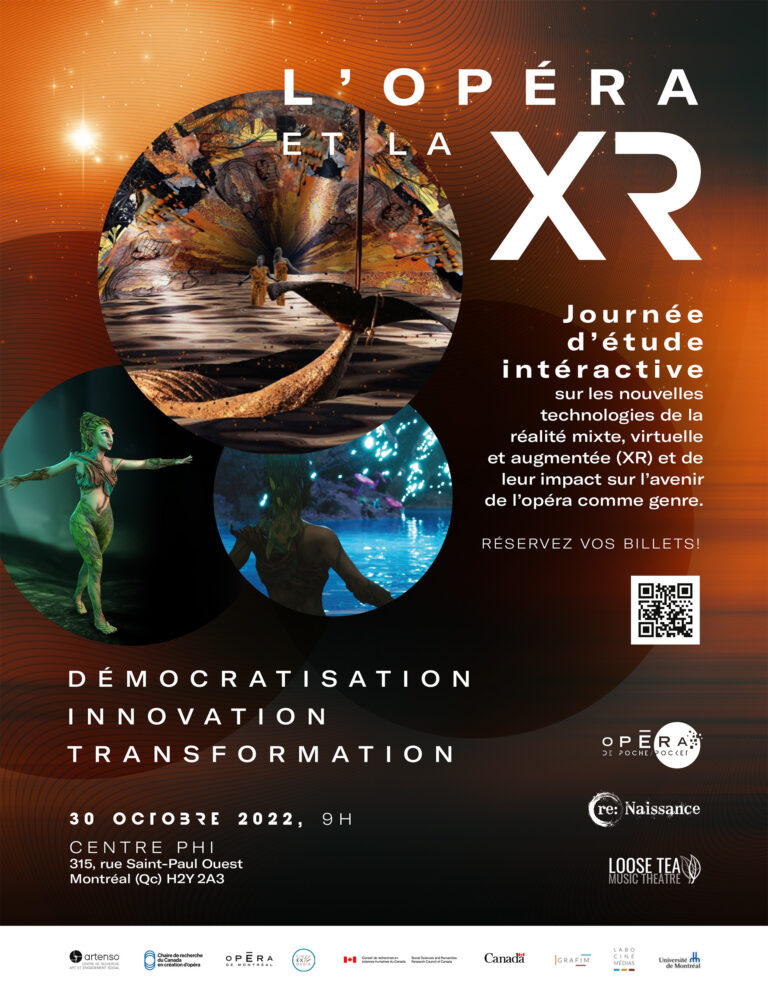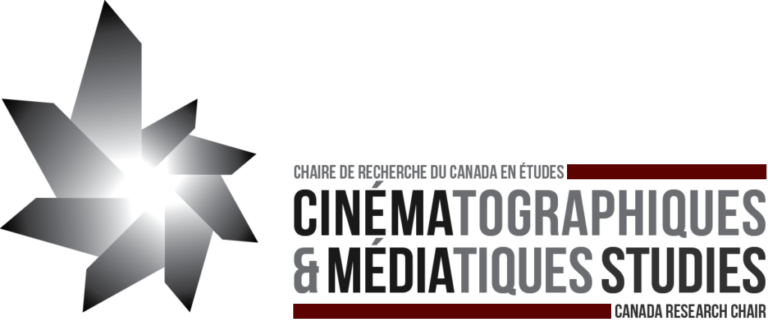The cinEXmedia and CRIGUM partnership has awarded a post-doctoral grant to the researcher Romina Soledad Romay.

Hugo Samson
In early October, cinEXmedia and the Centre de recherche de l’Institut universitaire de gériatrie de Montréal (CRIUGM) awarded a post-doctoral grant to the researcher Romina Soledad Romay. We interviewed the recipient to learn more about her work and her project, which is located at the intersection of digital technology, musical composition and art history.
Impressionist Art and Artificial Intelligence
As our interview begins, Romina Soledad Romay’s face radiates determination. “I’m happy,” she says, “but very focused. The early stages are the most important. One must sketch out the path to follow, understand how the laboratory works, meet the various partners.”
“The project includes the creation of an immersive experience inspired by Impressionist painting, in which various musical pieces will be created in connection with the sounds found in the natural environments seen in these paintings,” she explains. “The Impressionist vision of light and nature will come into play. Part of the work is inspired by nature, and the other part by painting.”
To create this project’s acoustic world, Romay and her team recoded the ambient sounds in a botanical garden. Using these recordings, the researchers created musical models evocative of a variety of plant species in different contexts.
“Visually, we use artificial intelligence to recreate the Impressionist style. It’s a creative and pedagogical endeavour. In the context of our art history project, artificial intelligence enables us to understand the peculiarities of this style and the age around it.”
Art as a Vector of Well-being
Romay maintains that the “therapeutic” aspect of the project is primordial. She is delighted to be able to work in an environment alongside scientists and health professionals. “The project is being carried out in a laboratory in which other experiments have been carried out to study art’s effects on people.”
According to Romay, the project fits perfectly with the values of cinEXmedia, which studies the beneficial effects of the audiovisual experience. “I would like to demonstrate that digital culture can counter the phenomena of alienation and isolation which can arise when we spend too long in front of our screens.”
“It is important to feel like you are part of something larger than you, which includes other researchers but also the environment. I find it interesting to be able to connect things and people and to generate well-being by integrating the youngest and the oldest and by mixing up disciplines in order to see farther.”
A Jane-of-all-trades Researcher
“I am very pleased to receive this grant and to have a connection with doctors and neurologists, it’s tremendous,” says this researcher who wanted to “work in the health field” before turning to artistic creation.
Early in her career, Romay had little idea she would end up in the field of multimedia art. In Buenos Aires, where she grew up, she first obtained an undergraduate degree in the natural sciences. A piano enthusiast, she entered a musical conservatory alongside her scientific studies. This is when she truly plunged into music.
Following these few years of studying musical composition, she studied at the Conservatoire national supérieur de musique et de danse in Lyon, where she discovered computer-assisted music. This was a lightning bolt. She then moved to Hamburg, where she explored the development of synthesizers and began various multimedia projects.
“When I was a child in school I always took advantage of recess to go to the library to try to lean something new. It was like a game. Seeing learning as something fun from the very earliest age connects our profession with pleasure, even when we are adults.”
What Comes Next
Romina Soledad Romay says that she is unswervingly attracted to research-creation. “For me, it’s natural. I have always been very curious and drawn to different fields. To create my compositions I try to explore new methods, to innovate. That enables me to broaden my field of perception and understanding. Creation is just a tool for exploring different fields.”
The future looks bright for the researcher and her team. “We’re in the planning stage, in the midst of organising projects and initiatives. Lots of ideas are in the process of emerging to put things in place.”
She also hopes to reach as wide an audience as possible. “It’s important to be able to feel one is a part of something, to create a collective, positive and constructive vision of our reality.”


